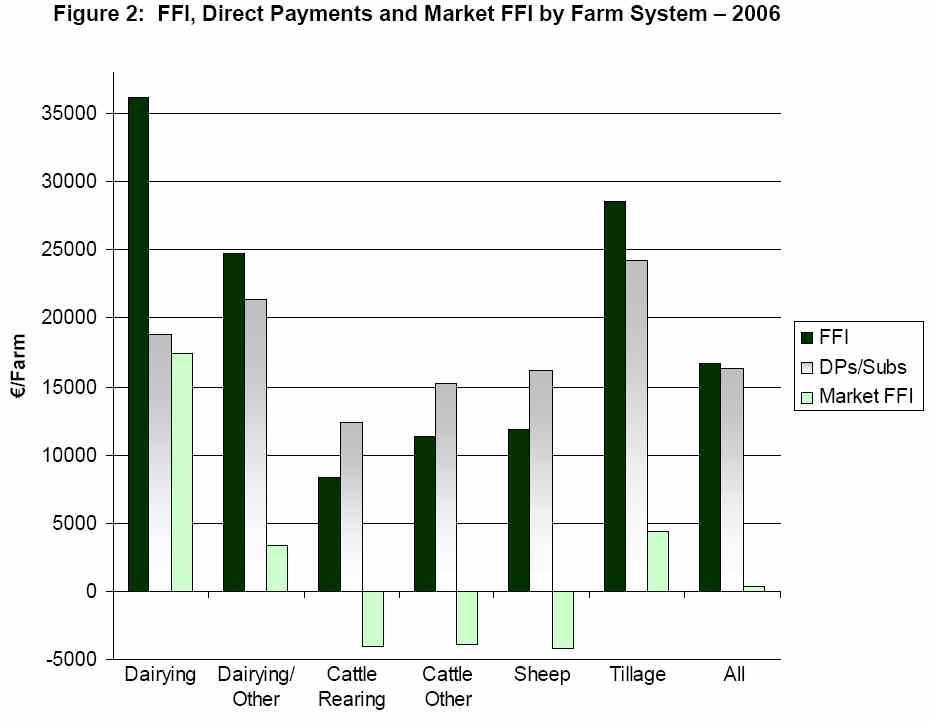The dependence of Irish farm incomes on the Single Farm Payment and other direct payments was starkly revealed by the publication of the 2006 results of the annual National Farm Survey (NFS) this week. Fully 98% of Family Farm Income (FFI) on Irish farms in 2006 was derived from the Single Farm Payment and other direct payments; only 2% represented the return from the market, the lowest recorded since the Survey commenced. Market FFI per farm in 2006 was only €334. In 2004, 86% of Family Farm Income came from direct payments and subsidies, and 14% from the market place.
The NFS contributes the Irish data to the EU’s Farm Accountancy Data Network but, unlike in many EU member states, it is drawn from a nationally representative sample of farms and thus provides a fair representation of the financial performance of the Irish farm population. However, direct payments/subsidies contribute a higher proportion to net income in the National Farm Survey compared to national statistics as pigs, poultry and other miscellaneous agricultural output on which direct payments are not made are excluded from the NFS results. It should also be noted that direct payments and subsidies include payments under agri-environment schemes, the less favoured areas scheme, forestry premia as well as the Single Farm Payment.
The key income concept is Family Farm Income. This is calculated by deducting all the farm costs (direct and overhead) from the value of farm gross output. FFI represents the financial reward to all members of the family who work on the farm for their labour, management and investment. It does not include income from non-farming sources and thus may not be equated to household income. However, where it does represent all the income of the farm family, it is expected to provide for that family’s living expenses as well as being a source of future investment in the farm business.
The relative importance of direct payments/subsidies differs across farm systems. Only in the Dairy and Tillage systems was FFI greater than the value of direct payments. In the livestock systems, farmers still use some of the SFP to support their farming enterprise. Direct payments/subsidies accounted for 149% and 135% of average FFI in the Cattle Rearing and Cattle Other Systems respectively, while in the Mainly Sheep System direct payments/subsidies accounted for 135% of FFI in 2006. Details are shown in the chart.
The full report is available on-line.



It is a similar picture in the UK. According to the Department for Environment, Food and Rural Affairs’s Agriculture in the UK report for 2006, total income from farming was £2.7 billion while total direct subsidy payments to farmers totalled £3.0 billion.
However this aggregated figure masks enormous variation both between sectors and within sectors in terms of reliance on subsidies for farm profitability. It is not just the size of the farm that makes the difference, a lot of the variance is down to the way the farm is managed.
Income payments
For so long, farmers were protected around the EU. We went from price support to income support, though anno 2009, the sector has never been in danger more then ever. Were the measures protecting them? Or, like i think, made it the farmers weak and not eager to look for alternatives. Eevery makrket had to keep up with the global market, but one sector to kept being treated as a child.
In Belgium, income of farmers went down about 25% ( prob more…), while in some it went up. Some stuff i really don’t get. The more you read about CAP, the more you weep. No reason, no long-term solution, just all a lot of money if you ask me
Wim
Heverlee, Belgium